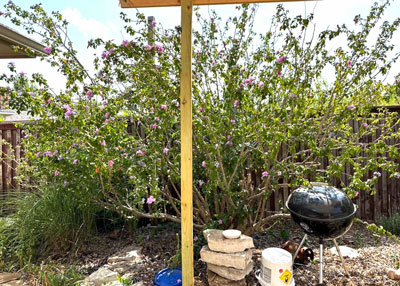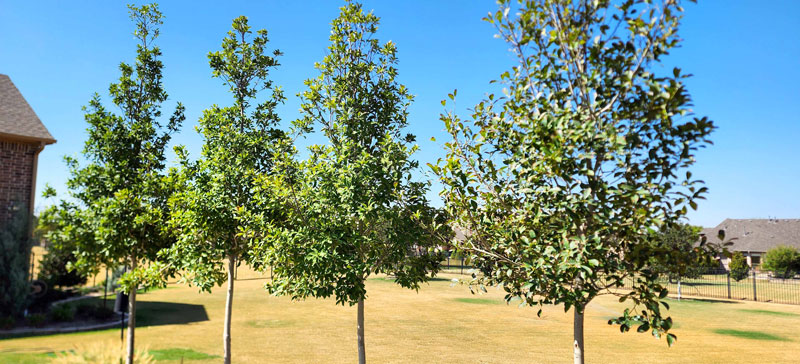Q&A – Ask Neil: September 14, 2023
(Please read these instructions carefully.)
Before you post your question, please look at recent issues to see if someone else has already asked it. You might find your answer there.
How to submit your question…
(Note: You may need to allow a pop-up window to come up in order to get the link for sending your photo(s). If you have already submitted your question and didn’t see the pop-up window, please click here.)
• Click the link provided below to post your question. After you submit your question, a new window will pop up giving you the address to which you can e-mail a SHARP, HIGH-RESOLUTION PHOTO to accompany your question. Please DO NOT SEND THUMBNAIL PHOTOS in case I need to zoom in to see things.
• Click here to post your question.
• Please ONLY POST YOUR QUESTION ONE TIME. We can only accept a set number of questions each week, and when we get duplicates it costs other people their chances.
• One question per reader, please.
• Please use this only for posting questions – not for standard emails.
• Watch for your answer in the following week’s e-gardens.
• I choose those of greatest general interest. For example, plant IDs seldom make the cut.
• I must have your first name or initials.
• I must have your city or county. (Texas is a very large state.)
QUESTION 1
WILL HYBRID CHESTNUTS DO WELL ON MY FARM IN WISE COUNTY?
Question: I lease my farm to deer hunters, and a company is trying to get me to plant hybrid chestnut trees to attract deer. Are they suited to this area? (I have a lot of native pecans and a few black walnuts on the place.) Tom C., Decatur.
Answer: American chestnuts (Castanea dentata) were a dominant tree species in the eastern half of the United States prior to 1900. The trees were beautiful, and the nuts were sweet and highly prized. Even the lumber was highly sought after. (I made the mantel in our house, for example, from chestnut I salvaged from an old lumberyard in northern Ohio in 1968.)
However, a Japanese disease called chestnut blight came into the United States at the turn of last century and killed millions of trees. In the past 15 years forest geneticists have been working to breed different species to bring resistance to the blight together with the beauty and nut production of the American chestnut. They are getting close, and the hybrids you’re describing are probably what “the company” is referring to.
American chestnuts were not native anywhere near Wise County when all this began, so I wonder how well these hybrids might do (or not do). At the most I would try a few to see if they survive your soil, summer weather and other environmental concerns. Or you could wait to let others do the trials for you at their expense. In the meantime, you could plant more pecans, oaks such as bur oaks, and other trees attractive to deer. I’m not a hunter, so I’ll have to refer you to my wildlife management friends with Texas A&M.
QUESTION 2
WHY ARE HONEYBEES AROUND MY LIVE OAK?
Question: I notice that my live oak is hosting a party of honeybees. I don’t find a common hive location, but they are exploring the outer limbs. Is it possible that my live oak is currently in bloom? Meg G., Waco.
Answer: Anymore, I guess anything is possible in Texas. But bees are not attracted to oaks in bloom. Oaks are pollinated by wind. Their flowers are catkins, and their pollen is dust-like, produced in March and April. My bet is that you have a hollow branch or trunk somewhere and that the bees have a hive hidden down in it. I wouldn’t worry so much about the bees as I would the hollow branch. It may be time to have a certified arborist inspect the tree carefully. Watch the tree at different times of day to see if you can determine where they are going. We needed to have work done on a tree with bees several years ago. Entomologists suggested the bees would be inactive when temperatures neared freezing, so we just waited for winter. My hope was that neither the bees nor the arborists would be harmed. It worked.
QUESTION 3
HOW CAN I STOP SPROUTS OF CRAPE MYRTLES?
Question: I had to remove a crape myrtle from each corner of my house last year. I have several suckers that keep coming up. I cut them off to the ground each week. Is there a way to treat them that will kill them and the root system? Greg G., Fort Worth.
Answer: It may be after the fact by now, but the best way is always, right after you do the cutting, to drill into the main stump(s) and fill the hole(s) with a broadleafed weedkiller containing 2,4-D and probably two other herbicides. Be careful not to let it pour out onto the soil. Let it soak into the wood and fill the cavity a second time the next day.
At this point, however, you may have to dig the sprouts out manually using a sharpshooter spade. I had a similar experience when I transplanted a 20-foot-tall crape myrtle several years ago in our landscape. I had probably 25 sprouts the first year. I dug out the biggest ones among them the first year and cut off the small ones. I had a few the second year, and none by the third year.
QUESTION 4
HOW LONG THIS FALL SHOULD I WATER NEW CRAPE MYRTLES?
Question: We planted five 3-gallon Dynamite crape myrtles last fall. Only two survived the winter. We found three replacement trees this year and planted them in the spring. How long into the fall should I continue to water them? Betty B., College Station.
Answer: I’m going to give you my stock answer that applies to all new nursery stock planted in 2022 or 2023 (including the two crape myrtles that did survive).
New plants set out from containers should be watered every other day when temperatures are near 100F. Cut that to every third day when temperatures exceed 95F. And every fourth day at 90F. Weekly at temperatures lower than 90F.
Each time you water them, give them an amount of water equal to the size of the container from which they were planted. That would mean that each of your Dynamite crape myrtles would get 3 gallons of water with each watering.
If you get a heavy rain, of course, you could cut back on the watering temporarily. Otherwise, however, you’ll want to water all the way through the fall and even over the winter a few times. Even though the tops may be bare, the root systems will be growing. Many folks see their plants struggle with cold damage because they allow them to go into cold spells without adequate moisture. Dynamite is a hybrid bred in Stillwater, Oklahoma, so it can handle Brazos Valley winters without problems.
QUESTION 5
AM I DOING RIGHT TO TREAT MY HOLLIES WITH A FUNGICIDE?
Question: Our holly tree suddenly developed brown tips on its leaves. The tree to the right is the culprit. I began treating all four with a fungicide. Am I doing right? Robert L., North McKinney.

Answer: You aren’t hurting anything, but I doubt if you’re helping, either. I live in McKinney, too, and I have grown more than three dozen cultivars of hollies in our landscape.
I believe these may be Eagleston hollies. In any event, they look like one of the American holly hybrids. Eagleston, for example, is a natural cross between American holly and Dahoon holly. Both of those require acidic soils, and Collin County has exactly the opposite. I do not recommend it or the other American holly hybrids for Collin County. Iron deficiency almost always gets all of them within their first few years in the western two-thirds of Texas. You can try applying iron and a sulfur soil acidifier since you already have the trees, but I fear that you’re only going to be prolonging the inevitable. If you end up replacing these, go with Nellie R. Stevens hollies, either in shrub form or tree form. They do not have the requirement of so much iron in their soil.
QUESTION 6
HOW SHOULD I HANDLE MY ROSE-OF-SHARON?
Question: My old rose-of-Sharon has gotten leggy. I have pruned dead branches out, but a friend suggested cutting the whole thing back a lot. I have a drip irrigation system. It gets water, but not lots of water. What do you think? Becky G., Sherman.

Answer: Your plant does look crowded. I would do selective trimming to shape it up. However, I would only do that after I watered it deeply. Very, very deeply. Poor thing looks like it’s been bone dry all summer. I would suggest removing or relocating the ornamental grass to some other place in your landscape. Roses-of-Sharon need an ongoing supply of water if you expect them to bloom. This plant is badly wilted. I can’t tell if there is a tree behind it, but if there is, that’s too much vegetation in too little room. I would move or remove it as well. If you use that grill, I hope you move it way off to the side so you don’t overheat the leaves of your rose-of-Sharon.
QUESTION 7
SHOULD I TRY TO THIN OUT MY CACTUS?
Question: I planted seven “pads” in this trough three years ago. I love the way it looks, but should I try to thin this out? Cathy S., Fort Worth.

Answer: This is glorious. I wouldn’t touch it. The most I would do is to start new plants in 5-gallon pots next spring so you could have a fresh start for a replanting should it ever become necessary. Or you might want a planting for another large patio pot, etc. Well done!

